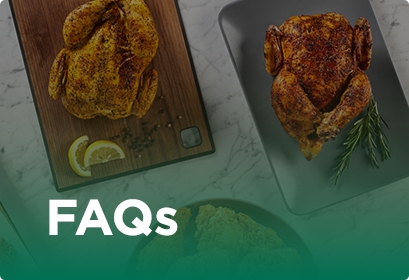As National Chicken Month comes to a close, we thought it appropriate to talk about one of our very favorite topics. Chicken, of course! At George’s, we’re always learning. Both for our own business, and so we can be better for our customers. Our attendance at this year’s WATTPoultry Chicken Marketing Summit in Birmingham, AL was no exception.
For two days, chicken buyers, marketers, distributors, and product development teams immersed themselves with all things “chicken marketing.” If you’ve never been, we strongly encourage it! And if you couldn’t attend this year, it was our pleasure to serve as your eyes and ears and bring to you what we heard loud and clear: Very quickly, our attention needs to take a significant turn toward emerging, influential consumers, those being younger Millennials and Generation Z.
Following are notable takeaways and trends about these soon-to-be influential buyers:
The What: Chicken Consumption
These up-and-comers were born between 1988 and 1997. While chicken consumption increased across nearly all generational groups over the past two years, including older Millennials (born 1981-1989), Generation X (born 1965-1980), and Boomers (born 1946-1964), younger Millennials and GEN Z indexed much higher than any other group. Along with this, these generations focus more on health and wellbeing, which is good news for a healthy protein source like chicken.
The Who: The Shift to Younger Consumers is a Numbers Game
According to U.S. Census’ taken statistics, during the past 11 years, the population has grown by 800 million people. Most of that growth has come from GEN Z, and Generation Alpha just behind them. This means that new, larger influential generations are maturing and possessing buying power. In fact, according to NielsenIQ projects, Gen Z will soon “become the wealthiest generation ever,” according to a recent report. The “Spend Z” report from NielsenIQ projects that Gen Z will have the fastest growth in spending power, reaching an estimated $12 trillion by 2030, overtaking baby boomer spending by 2029.
The How: What Influences Purchases for GEN Z
Surprisingly, while price is still the primary “practical” factor driving chicken purchases, there are other, almost equally important primary drivers including:
• 85% – Flavor
• 85% – Food Safety
• 84% – Quality
• 79% – Nutrition
In the past, there has been a bigger gap between these drivers, so it’s unusual to see them performing so similarly now.
The How: Rules of Engagement
When it comes to younger generations of buyers, they crave connection with the brands and companies they will patronize:
• Younger generations seek not just communication but connection. They want to feel like they know you, and you understand them.
• While we can all talk a good talk, it’s becoming more important to listen. Often.
• While many of us are good at presenting the facts, newer generations seek empathy and emotional connections that balance out the facts.
• Just because we say it, doesn’t make it true. Younger generations expect us to SHOW them. And to be fully truthful, transparent, authentic, and faithful to a values-driven approach to business.
• Younger consumers seek customized experiences. Messages should be short, virtual, immersive, 3-D, and personalized.
• They expect us to lean into values and foster relationships by starting now. Even though they might not be able to pay a premium for products today, tomorrow they will.
The Where: The Role of Technology & Social Media Channels
Younger Millennials and Gen Z grew up in the digital era, leading to a shift in consumer purchasing behavior. With the rise of e-commerce and constant access to brands through technology, these generations are more connected than ever. Key moments include:
- 2008: Launch of the first mobile Facebook app.
- 2010: Twitter app released.
- 2010: Instagram app launched, quickly growing to over 3 million users.
- 2011: Amazon’s mobile app for shopping launched.
- 2012: Snapchat launched on Android.
- 2018: TikTok downloaded over 104 million times.
- 2019: Instagram added in-app purchases.
- 2022: TEMU entered the U.S. market.
This constant connectivity can lead to stress as consumers navigate endless choices and information.
The Where: Where GEN Z and Younger Millennials Shop
At this time of life, when they need to make the dollar stretch, these consumers are cost-conscious, more of them shop regularly at superstores, supermarkets, and warehouse stores versus online and at specialty retailers. They also shop at specialty shops and stores due to their limited options which relieves anxiety.
The Why: Inherent Distrust of Big “Anything”—Including the Food Industry
While the food system has never been safer, GEN Z is distrusting. Consider these surprising facts:
• 73% believe food companies are greedy and only care about profits.
• 49% believe farmers are greedy and only care about profits, which is a significant switch-up from the past, when an overwhelming majority of consumers trusted farmers.
• 72% believe our food system is broken.
• 43% don’t believe food companies understand them.
The good news is, each of these areas present opportunities to bring our stories to life and make more emotional connections with our consumers.
In a Nutshell
The future for chicken is bright! As younger consumers focus on health and wellbeing, chicken is well-positioned as a protein of choice. While the future spending power for younger Millennials and GEN Z is on the precipice, now is the time to invite them to learn more about your brand and business by listening, connecting, and entwining empathy along with facts. Trust that if you’re doing the right things and share your story in ways that are digital, visual, entertaining, engaging, and immersive, you will find wiling and open consumers.
Now and for our future.


